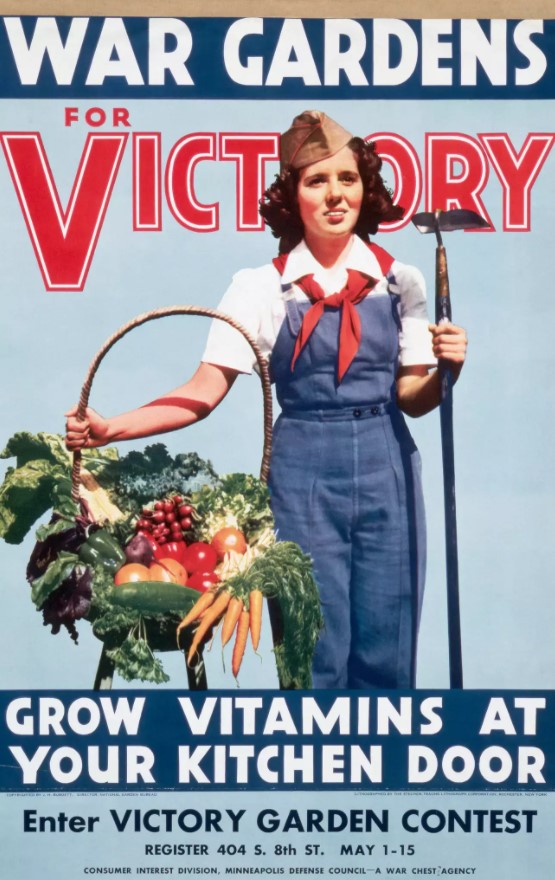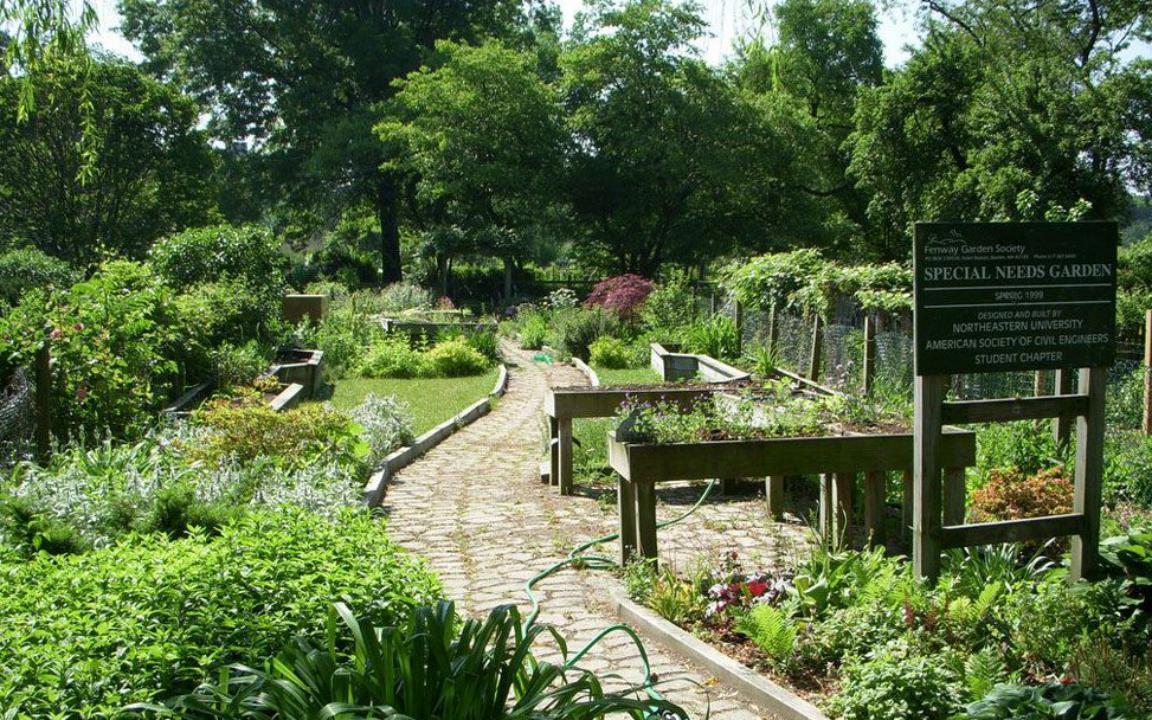
Victory Gardens
I wrote this piece for the Greenfield Spirit, our town wide newsletter in the spring of 2020 at the beginning of the pandemic. I’m including it here because it is in part about our homestead and I think of general interest to you, our readers. For more details on our garden please read the entry titled A New Kind of Garden in this section.
It seems with the new world order we find ourselves in, the era of the corona virus, that there is a strong renewed interest in gardening. Many of us are out of work or working from home, the trip the grocery store has become a very different experience and money is tight. When the going gets tough, many Americans go gardening. Internet seed vendors are out of many popular seeds and the garden centers are mobbed. In a very real sense we are seeing another generation of Victory Gardens. We are at war with an unseen enemy and it feels smart and prudent to garden.
I have had an on again off again relationship with gardening across my lifetime. Many years I didn’t garden and other years I did. I started gardening at a very young age growing up in Boston. I’m a true Bostonian and grew up in the Fenway neighborhood. In the 1950s, my parents had a Victory Garden. Some of my earliest memories are of gardening along the banks of the Muddy River. The Victory Garden idea started in World War I, but really took off during WWII. Remarkably, one third of all the produce grown in the United States during the war; came out of Victory Gardens. The gardens were often on public land which was true in our case. Gardening during the war was considered part of the patriotic effort to keep Americans fed. The gardens continued after the war and in fact the very gardens that I gardened in 60 plus years ago are still there and the oldest continually operating Victory Gardens in the country.

Victory Garden Poster from WWII
So, what to do? Entire books have been written by people a lot more knowledgeable than me on gardening and this is a short article. Now is the time to put a garden in, so let’s focus on getting a garden started. Speaking of knowledgeable people, I reached out to Greenfield’s own master gardener Roger Swain. If you don’t know, Roger was the host for many years of the PBS television series “The Victory Garden”. He has written several books on gardening. He knows stuff. Much of what Roger graciously shared with me is in this article and I am very grateful for his informed input.
There are things gardening that you can influence and things you can’t. Your garden’s location and its relationship to the sun is a fixed relationship. An absolute minimum of 6 hours of sun (more is better) has to be part of the deal. Pick a spot and watch the sun for several days. The arc of the sun will move further north leading up to solstice (late June) and then head back south after that. We have no say in this. The ideal location on your property is a south facing gentle slope that drains well. If it is a low spot and stays wet long after it stops raining; that will present challenges. Late in the season cold air will drain downhill into low spots, increasing your risk of an early frost. If it’s on an exposed hilltop, it may suffer from the wind. So, south facing with long periods of sunlight, well draining soil and some protection from the wind is ideal. Most of our wind comes from the west; warmer air from the southwest and colder (think violent thunder squalls) from the northwest. My garden sits in the lee of my house, to the east. Tall stuff like corn and sunflowers are particularly vulnerable to the wind. It is possible to use trellises to break the wind but buildings work really well.

A Modern Addition to the Victory Gardens of my Childhood
Gardening is work, so let’s work smarter not harder. Close to the house is good… if I want some lettuce leaves and some basil for dinner, nearby is convenient. I’m not a fan of rolling 100’ hoses day after day and maybe you’re not either. I buried a water line into my garden (which I might add is only 25’ from my house) and there is a 25’ hose with a faucet right in the middle of my plot. That is extremely convenient and I like that. Soil can be amended and improved and will need to be from year to year. The shape and depth of your planting beds is important and labor intensive to change. Raised bed gardening is here and here to stay. Wider and deeper works better, the roots grow bigger and you get better yield. Raised beds do not have to have wood, metal or masonry sides. Some gardeners simply mound up the beds. The main object is to have a wide, deep bed that you don’t walk on and compact. The taller bed also means less bending over to work on it. The walk ways between the beds need weed control. Cardboard under wood chips, straw or mulch is often used. I prefer landscape fabric under crushed stone for several reasons. The fabric lasts much longer and the crushed stone drains well and (this is a big one) doesn’t harbor ticks.
You are going to need a fence. There are plenty of animals who would like to share your bounty. Deer present a particular challenge. An eight or nine foot fence will keep out even the most athletic deer, but that’s a lot of fence. A five or six foot fence will keep most critters out. You can go electric or box wire. Roll fencing (box wire fence that comes in a roll) is a challenge to stretch and keep tight. It is relatively inexpensive when put up with metal “T” posts. But after a season or two, it will sag. I like cattle panels (very heavy wire fence that comes in flat sections) stapled to wood posts. It is expensive and labor intensive to put up, but lasts for years. You can buy 16’ cattle panels and bend them into an arch and anchor them with a couple “T” posts on each side. Use tie wraps to bind the panel to the posts. You get an instant rugged trellis and can garden vertically. They save space and give climbing vines lots of room to grow. I put mine over walk ways and anchored them in the raised beds. You can walk under them. It’s a cool way to increase your growing space without increasing the square footage of your garden.

Our Garden
There is also an option for the most minimal of gardens. You can grow plants in big flower pots or containers. Half whiskey barrels, five-gallon pails and old water troughs are just a few of the possibilities. Plenty of sun, good soil and drainage are all you need. You can do a scattered garden this way, not everything has to be in the same place. You plant here and there around your house.
I think that’s enough for now. If you are looking for a good book, I asked Roger for a recommendation, try Edward Smith’s The Vegetable Garden Bible. It is a very readable and comprehensive book… an excellent resource. I would like to leave you with three things Roger said to me that really stood out. First, if you are new to this, start small… it’s a lot of work, keep it modest. Second, grow what you will eat… it’s nice to experiment with new things, but not a whole garden’s worth. And lastly… there is no substitute for the gardener’s shadow. You need to be in the garden to know what’s going on. You need to see the holes in the leaves, the signs of pests. You will know when the garden is dry and needs water. Roger was quick to point out that there is no such thing as a low maintenance garden. You are going to need to put in effort to have a successful garden. But, if you think about it… that’s really the whole point. So cheers and happy gardening!

Recent Comments